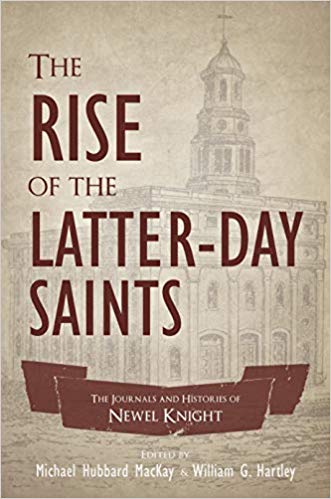[FairMormon has received several questions about this recently, so we were pleased to see Interpreter publish this essay by Christopher J. Blythe. It has been cross-posted with permission.]
Abstract: In this essay, I examine a letter written by Elder Vaughn J. Featherstone in 1983 and deposited in the cornerstone of the Atlanta Georgia Temple. The letter is addressed to twenty-first century members of the Church and is written with the expectation that these future Saints will have been alive for the Second Coming of Jesus Christ. I consider the claims made about this letter from a recent viral video entitled “7 Year Tribulation in the SEVENTH Seal TIMELINE.”
On March 12, 2020, the video “7 Year Tribulation in the SEVENTH Seal TIMELINE” was released on YouTube.1 Six weeks later it had 375,000 views and had made the rounds on various Facebook groups, including one devoted to discussion among seminary teachers. The video presents a last days timeline that places the Second Coming in the very near future. The video’s creator, Masayoshi Montemayor, makes his points largely through official Church sources, including the Church’s website, institute manuals, and conference reports. However, in other instances, he points to obscure sources, including an April 1983 letter written by Seventy Vaughn J. Featherstone. This letter serves as Montemayor’s final piece of evidence for an imminent second coming. In this essay, I examine this document to understand its limitations for the argument Montemayor makes. My goal is not to criticize Elder Featherstone or to disparage sincere Latter-day Saints — among them presumably this video’s creator — who like myself are eager to be present for our Savior’s coming. [Read more…] about Vaughn J. Featherstone’s Atlanta Temple Letter

 Brian C. Hales is the author or co-author of seven books dealing with plural marriage—most notably the three-volume, Joseph Smith’s Polygamy: History and Theology (Greg Kofford Books, 2013) He and his wife Laura are the current webmasters of JosephSmithsPolygamy.org. Presently, Brian is working on two book-length manuscripts dealing with Joseph Smith’s treasure seeking and the authorship of the Book of Mormon. He served a mission to Venezuela for The Church of Jesus Christ of Latter-day Saints and sang with the Mormon Tabernacle Choir for fourteen years. Brian is also past president of the Utah Medical Association (2013) and the John Whitmer Historical Association (2015).
Brian C. Hales is the author or co-author of seven books dealing with plural marriage—most notably the three-volume, Joseph Smith’s Polygamy: History and Theology (Greg Kofford Books, 2013) He and his wife Laura are the current webmasters of JosephSmithsPolygamy.org. Presently, Brian is working on two book-length manuscripts dealing with Joseph Smith’s treasure seeking and the authorship of the Book of Mormon. He served a mission to Venezuela for The Church of Jesus Christ of Latter-day Saints and sang with the Mormon Tabernacle Choir for fourteen years. Brian is also past president of the Utah Medical Association (2013) and the John Whitmer Historical Association (2015). Ben Spackman is a Latter-day Saint scholar who works in American religious history, history of science, and Biblical interpretation. He is writing a dissertation at Claremont on LDS creationism/evolution conflict in the 20th century, and has spoken at the FairMormon Conference in 2017 and 2019. This is cross-posted at his site,
Ben Spackman is a Latter-day Saint scholar who works in American religious history, history of science, and Biblical interpretation. He is writing a dissertation at Claremont on LDS creationism/evolution conflict in the 20th century, and has spoken at the FairMormon Conference in 2017 and 2019. This is cross-posted at his site,  Matthew C. Godfrey is a general editor and the managing historian of the Joseph Smith Papers. He holds a PhD in American and public history from Washington State University. He has contributed to several Joseph Smith Papers volumes, including Documents, Volume 2; Documents, Volume 4; Documents, Volume 7, and the forthcoming Documents, Volume 10, and Documents, Volume 12. He is the author of Religion, Politics, and Sugar: The Mormon Church, the Federal Government, and the Utah-Idaho Sugar Company, 1907–1921 (2007), which was a co-winner of the Mormon History Association’s Smith-Petit Award for Best First Book. He is also the co-editor of The Earth Shall Appear as the Garden of Eden: Essays in Mormon Environmental History (2019). Matthew has published articles in Agricultural History, The Public Historian, Pacific Northwest Quarterly, Journal of Mormon History, BYU Studies Quarterly, Mormon Historical Studies, and various collections of essays. His research interests and expertise include environmental history, business and financial history, and the history of Zion’s Camp.
Matthew C. Godfrey is a general editor and the managing historian of the Joseph Smith Papers. He holds a PhD in American and public history from Washington State University. He has contributed to several Joseph Smith Papers volumes, including Documents, Volume 2; Documents, Volume 4; Documents, Volume 7, and the forthcoming Documents, Volume 10, and Documents, Volume 12. He is the author of Religion, Politics, and Sugar: The Mormon Church, the Federal Government, and the Utah-Idaho Sugar Company, 1907–1921 (2007), which was a co-winner of the Mormon History Association’s Smith-Petit Award for Best First Book. He is also the co-editor of The Earth Shall Appear as the Garden of Eden: Essays in Mormon Environmental History (2019). Matthew has published articles in Agricultural History, The Public Historian, Pacific Northwest Quarterly, Journal of Mormon History, BYU Studies Quarterly, Mormon Historical Studies, and various collections of essays. His research interests and expertise include environmental history, business and financial history, and the history of Zion’s Camp. Larry E. Morris, an independent writer and historian, is the author of A Documentary History of the Book of Mormon (Oxford University Press, 2019). He was previously an editor with both the Neal A. Maxwell Institute for Religious Scholarship and the Joseph Smith Papers. He is the co-editor, with John W. Welch, of Oliver Cowdery: Scribe, Elder, Witness (Maxwell Institute, 2006) and has published articles on Mormon history in BYU Studies, the FARMS Review, the Journal of Book of Mormon Studies, the Journal of Mormon History, the Ensign, and the New Era. He is also quite interested in early Western history and is the author of In the Wake of Lewis and Clark: The Expedition and the Making of Antebellum America (Rowman & Littlefield, 2019); The Perilous West: Seven Amazing Explorers and the Founding of the Oregon Trail (Rowman & Littlefield, 2012); and The Fate of the Corps: What Became of the Lewis and Clark Explorers After the Expedition (Yale University Press, 2004). Larry and his wife, Deborah, live in Salt Lake City and have four children and eight grandchildren.
Larry E. Morris, an independent writer and historian, is the author of A Documentary History of the Book of Mormon (Oxford University Press, 2019). He was previously an editor with both the Neal A. Maxwell Institute for Religious Scholarship and the Joseph Smith Papers. He is the co-editor, with John W. Welch, of Oliver Cowdery: Scribe, Elder, Witness (Maxwell Institute, 2006) and has published articles on Mormon history in BYU Studies, the FARMS Review, the Journal of Book of Mormon Studies, the Journal of Mormon History, the Ensign, and the New Era. He is also quite interested in early Western history and is the author of In the Wake of Lewis and Clark: The Expedition and the Making of Antebellum America (Rowman & Littlefield, 2019); The Perilous West: Seven Amazing Explorers and the Founding of the Oregon Trail (Rowman & Littlefield, 2012); and The Fate of the Corps: What Became of the Lewis and Clark Explorers After the Expedition (Yale University Press, 2004). Larry and his wife, Deborah, live in Salt Lake City and have four children and eight grandchildren. Elizabeth Kuehn received her Bachelor of Arts in History from Arizona State University and her Masters of Arts from Purdue University in History, with a focus on religious history and women and gender studies in early modern European history. She entered a doctoral program in History at the University of California, Irvine, and became a PhD candidate there in 2011.
Elizabeth Kuehn received her Bachelor of Arts in History from Arizona State University and her Masters of Arts from Purdue University in History, with a focus on religious history and women and gender studies in early modern European history. She entered a doctoral program in History at the University of California, Irvine, and became a PhD candidate there in 2011.
 Scott A. Hales has been a historian/writer for the Church History Department since 2015. He currently works as a writer and story editor for Saints: The Story of the Church of Jesus Christ in the Latter Days, the new four-volume narrative history of the Church. He has a BA in English from Brigham Young University and an MA and PhD in American Literature from the University of Cincinnati. He has published scholarly articles on Mormon and American literature in several academic journals, including Religion and the Arts and The Journal of Transnational American Studies. He currently lives in Eagle Mountain, UT with his wife and five children.
Scott A. Hales has been a historian/writer for the Church History Department since 2015. He currently works as a writer and story editor for Saints: The Story of the Church of Jesus Christ in the Latter Days, the new four-volume narrative history of the Church. He has a BA in English from Brigham Young University and an MA and PhD in American Literature from the University of Cincinnati. He has published scholarly articles on Mormon and American literature in several academic journals, including Religion and the Arts and The Journal of Transnational American Studies. He currently lives in Eagle Mountain, UT with his wife and five children. Matthew P. Roper (M.S. in Sociology, Brigham Young University) was a resident scholar and research assistant for the Institute for the Study and Preservation of Ancient Religious Studies at Brigham Young University. He is now a Research Associate at Book of Mormon Central.
Matthew P. Roper (M.S. in Sociology, Brigham Young University) was a resident scholar and research assistant for the Institute for the Study and Preservation of Ancient Religious Studies at Brigham Young University. He is now a Research Associate at Book of Mormon Central.
